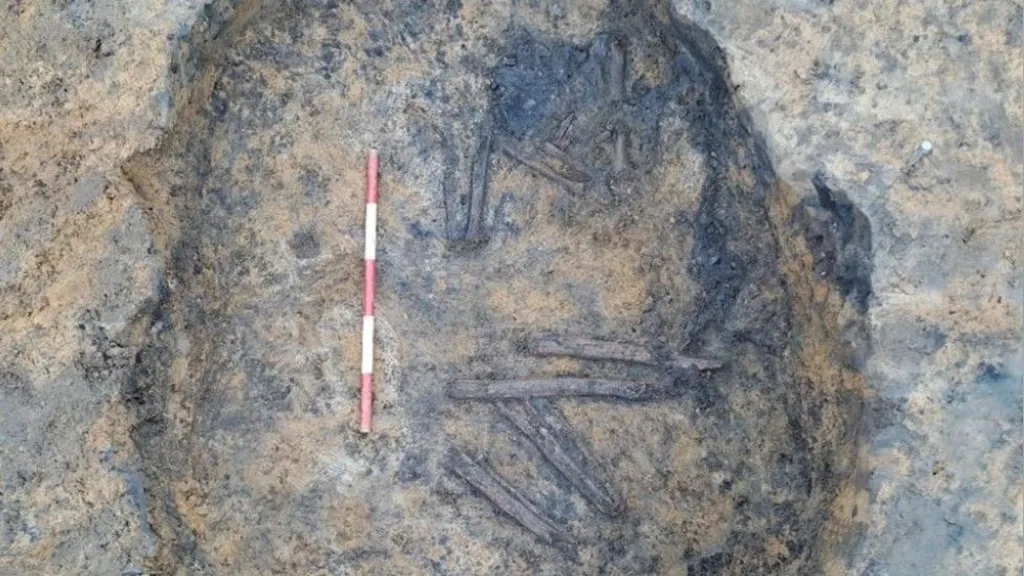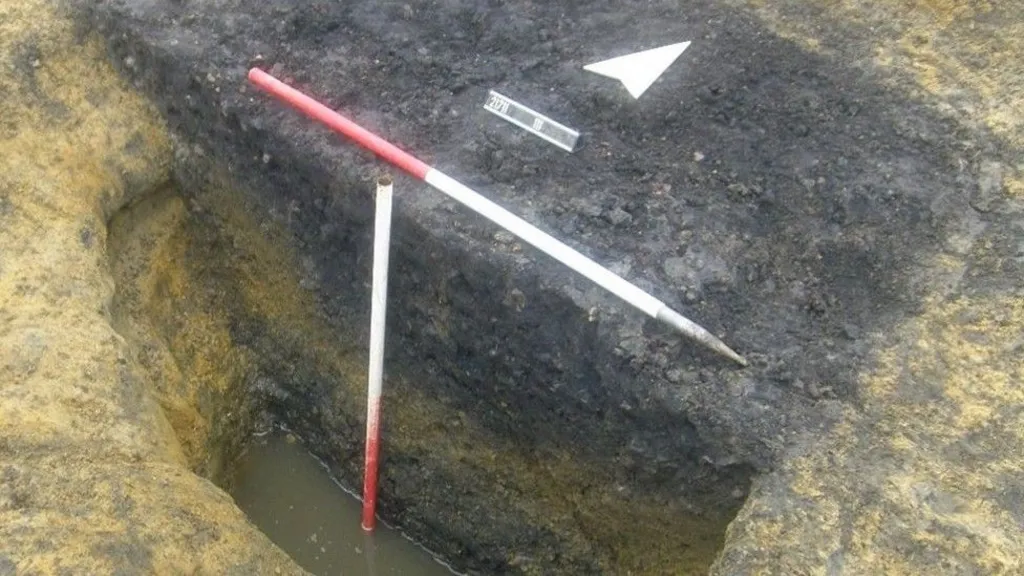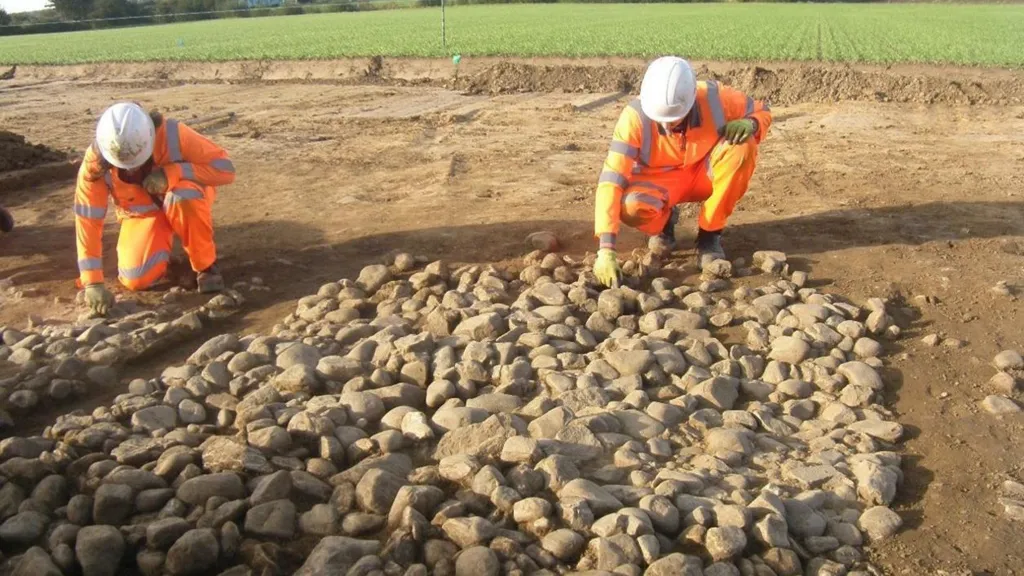
A 4,500-year-old funerary monument discovered in East Yorkshire
A 4500-year-old burial monument, along with a burnt mound and parts of a Roman road, have been discovered in East Yorkshire during fieldwork ahead of the construction of a sewer.
The discovery was made by archaeologists from Ecus Archaeology for Yorkshire Water.
Although the analysis part of the research has not yet begun, it seems that the artifacts and materials from the ancient environment have the potential to unravel many unknowns about life four thousand five hundred years ago.
The human remains within a small circular burial monument discovered near Full Sutton are surprisingly well preserved. The local sandy geology is usually too acidic for human remains to survive, but the grave was filled with a mixture of burnt stone and charcoal from the adjacent ‘burnt mound’ spread, which appears to have helped the bones survive.

The buried person was placed in a pit in a fetal or ‘crouched’ position and this grave was surrounded by a ring stream. These prehistoric traditions are known from similar monuments or ’round barrows’ discovered both in Yorkshire and across the UK. Such monuments are usually of Late Neolithic or earlier Bronze Age date and are covered by a dome-shaped earth or stone mound.
This evidence tells the Full Sutton example could be around 4500 years old.
Interestingly, the round mound was built very close to, but not on, what archaeologists call a ‘burnt mound’. These enigmatic prehistoric settlements are relatively common in highland regions where they survive as burnt mounds of stone and charcoal, but lowland examples are less obvious because they were later plowed flat. Little is known about what burnt mounds were used for and their excavation is seen as an important research priority.
Adam Ellis, project manager at Yorkshire Water, said: “This has been a fascinating project to be involved in. The archaeology work we did before we started new sewerage in the area is something we do on projects that are considered sites of archaeological interest and it was great to see some of the findings in situ.
The grave did not contain any artifacts, but the bones themselves are an important scientific resource, as expert analysis often provides evidence that can provide insight into the life of the individual.

Archaeologists uncovered part of the foundations of a previously unknown Roman Road along with the mausoleum. The Roman Road was closer to Stamford Bridge.
The road foundation is surrounded by drainage ditches and its alignment indicates that it ran northwards towards the Scheduled remains of the Roman town of ‘Derventio’ at Reckondales.
Cover Photo: Yorkshire Water
You may also like
- A 1700-year-old statue of Pan unearthed during the excavations at Polyeuktos in İstanbul
- The granary was found in the ancient city of Sebaste, founded by the first Roman emperor Augustus
- Donalar Kale Kapı Rock Tomb or Donalar Rock Tomb
- Theater emerges as works continue in ancient city of Perinthos
- Urartian King Argishti’s bronze shield revealed the name of an unknown country
- The religious center of Lycia, the ancient city of Letoon
- Who were the Luwians?
- A new study brings a fresh perspective on the Anatolian origin of the Indo-European languages
- Perhaps the oldest thermal treatment center in the world, which has been in continuous use for 2000 years -Basilica Therma Roman Bath or King’s Daughter-
- The largest synagogue of the ancient world, located in the ancient city of Sardis, is being restored











Leave a Reply